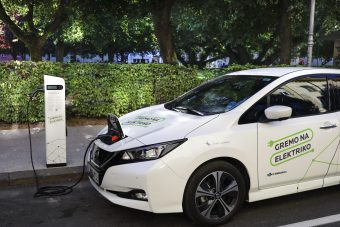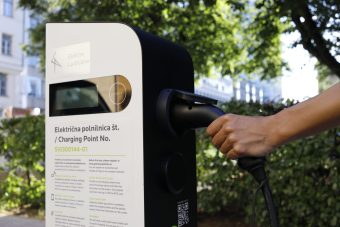
Size-wise, Slovenia is one of the smaller countries in Europe whose territory is more than half covered by forests, is recognizable by its beautiful landscapes and is often known as a country that takes care of and protects its natural wealth. Following the steps toward sustainable development, starting in 2011, this country classified electromobility as an important topic for preserving a healthy environment when it subsidized the purchase of the first three electric cars in the country. We spoke with Marija Lesjak, Secretary of the Directorate for Transport Policy at the Ministry of Environment, Climate and Energy (MOPE), about the development of electromobility and incentives for citizens to switch to alternative fuel vehicles.
By 2018, the purchase of 1,521 electric vehicles was gradually co-financed. In October 2017, the Slovenian government adopted the Market Development Strategy for setting up an appropriate transport infrastructure related to alternative fuels. Article 3 of Directive 2014/94/EU of the European Parliament and of the Council on the establishment of infrastructure for alternative fuels was hereby incorporated into the Slovenian legal system, which requires EU Member States to adopt national policy frameworks for market development, concerning alternative fuels in the transport sector and set up an appropriate infrastructure.
This strategy was a national framework for reducing greenhouse gases, especially CO2 emissions in the transport sector, by 2030, so the goal was to have at least 200,000 electric vehicles by that time. The strategy also includes a certain number of other alternative fuel vehicles. Speaking about the infrastructure for electric vehicles, the goal was to provide at least one charger for every 10 registered electric cars.
IN FOCUS:
- CHARGE&GO CONTINUES TO BUILD A NETWORK OF CHARGER
- HOW TO PROPERLY MANAGE ENERGY CONSUMPTION
- HOW TO DEVELOP ELECTROMOBILITY FASTER
In 2019, the Slovenian government adopted the Action Programme for Alternative Fuels in Transport, which included various measures to improve the alternative fuel market and establish the appropriate infrastructure for alternative fuels. Since that year, the purchase of an average of 1,000 electric vehicles per year has been co-financed.
“From 2011 to 2022, we co-financed the purchase of 5,687 electric vehicles. Since then, including 2019, subsidies for plug-in electric hybrids (PHEVs) and battery electric vehicles (BEVs) have been available. From 2020, subsidies are only available for BEVs. Subsidies for personal electric vehicles range from 4,500 to 6,500 euros per vehicle and 3,500 euros for light commercial vehicles,” said Marija Lesjak.

Given that the adopted strategy from 2017 was not sufficient for the accomplishment of ambitious goals set by the European Union as part of the European Green Deal and the Fit for 55 set of regulations, on May 25, 2023, Slovenia adopted a new systemic law on infrastructure for alternative fuels and promoting the transition to alternative fuels in transport (ZIAG). This law creates a legal framework for establishing, developing, expanding, and safely using an interoperable and user-friendly infrastructure for filling and supplying alternative fuels to road, air, and sea traffic and three types of energy sources – electricity, hydrogen, and natural gas.
The law also prescribes three basic levels of infrastructure development for alternative fuels. The first is strategic planning of the alternative fuel infrastructure, where, considering the current state and maturity of the existing technologies, the emphasis is on planning the infrastructure network for charging electricity for road vehicles. Then, there is the provision of a long-term dedicated resource for co-financing measures for switching to alternative fuels, which will contribute to accomplishing environmental and energy goals in the transport sector. The last level is forming an executive body to implement public tenders and calls for allocating dedicated funds for measures to accelerate the transition to alternative fuels in traffic, i.e. infrastructure and vehicles or a combination of both. Also, a centre is being established to promote the transition to alternative fuels.
Electrification of public passenger transport is also one of the goals of the new ZIAG. Speaking of which, urban and suburban public passenger transportation has the greatest potential for switching to electric vehicles. Intercity lines are currently not planned because they cover the greater mileage, that is, the inadequate power range of the available electric batteries.
Prepared by: Katarina Vuinac
Read the story in the new issue of the Energy portal Magazine ELECTROMOBILITY



